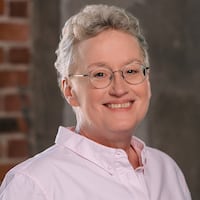The five-year plan covers Auglaize, Butler, Champaign, Clark, Clinton, Darke, Greene, Mercer, Miami, Montgomery, Preble, Shelby and Warren counties.
The Miami Valley Regional Planning Commission and the Dayton Development Coalition worked with community, government, education and business stakeholders across the region to develop the plan.
Here’s what some of those interviewed said about the Dayton Region Comprehensive Economic Development Strategy (CEDS):
Credit: Contributed
Credit: Contributed
Stacy Schweikhart, director of strategy and engagement for the Miami Valley Regional Planning Commission
“The needs across our country for investment are so great and they’re more than anyone can fund all at once. So the reason this planning process is so important is that it helps our partners at the federal government know what the priorities are for our region so they can prioritize their own investments here in the region, across the state, in the Midwest region and across the country as a whole.”
Julie Sullivan executive vice president for regional development for the Dayton Development Coalition
“Talent and workforce is by far our top priority and we’ve heard that loud and clear from the stakeholders that participated with the effort.”
Credit: CSU University Public Relations
Credit: CSU University Public Relations
Morakinyo A.O. Kuti, Central State University associate provost for research
“Enhancing the skills of underrepresented minorities, particularly African Americans, in the Miami Valley region will facilitate economic recovery and mitigate the disproportionately negative health, employment and education impacts on minorities in areas still struggling with the legacy of redlining and the most devastating pandemic setbacks. Further, increasing individual’s skills in the targeted, growing industries will make them resilient to future economic downturns.”
Credit: Contributed
Credit: Contributed
Shelley Dickstein, Dayton city manager
“The whole point for the feds is to create greater economic impact, economic resiliency, inclusive economic development. That’s really what their values are all about. So it makes sense that you would want something regionalized.”
Horton Hobbs IV, vice president of economic development for the Greater Springfield Partnership
“Certainly we have some headwinds facing us with inflation and interest rate increases. But as a whole the economic activity of our county has continued to be very brisk, not just in commercial and industrial development, but also in residential development.”
Cassie Barlow, president of Strategic Ohio Council for Higher Education
“It is also important to recognize that an economic development strategy relies on a strong workforce development strategy.”
Jody Gunderson, Hamilton economic development director
“Your workforce is becoming the most valuable commodity a city can have. You see shortages of talent and that begins to dictate whether or not you can attract companies. A company doesn’t want one or two people applying for each available job. They want 20 or 25 people applying for each job. The more skilled people you have the more attractive you are to a company.”
Credit: Contributed
Credit: Contributed
Nathan Cahall, Middletown assistant city manager
“(The CEDS) validates what our business community is telling us in terms of challenges and hurdles they have in terms of trying to grow and expand.”
Credit: JIM NOELKER
Credit: JIM NOELKER
Whitney Barkley, director of the Greater West Dayton Incubator
“We’re really creating the opportunity for people to be exposed to new businesses, new ideas and really just a big opportunity for businesses to see some sustainability.”
Credit: Contributed
Credit: Contributed
Robert N. Beeler, economic development lead at AES Ohio
“(The region) can pair electric, plus gas, plus water, plus workforce. Where those four intersect you have a winner. If you have a site that has the electrical capacity, the gas capacity, the water capacity and the people then that’s a win.”
Credit: HUE12, LLC
Credit: HUE12, LLC
Judy Dodge, Montgomery County commissioner
“This plan acts as a guide, allowing us to continue building a strong, diversified and resilient regional economy for every single one of our citizens.”
Credit: Contributed
Credit: Contributed
Steve Stanley, development specialist at the Montgomery County Transportation Improvement District
“These things take time. You don’t just overnight expand water and sewer lines. You don’t build new roads overnight, especially if federal money is involved. And It takes a while to educate and help prepare a workforce.”
Credit: contributed
Credit: contributed
Shannon Cox, superintendent of the Montgomery County Educational Service Center
“We all need to do our parts. We need to understand that tomorrow’s workforce is in our school hallways today.”
Angelia Erbaugh, President of the Dayton Region Manufacturers Association
“The value of the CEDS process, of course, is bringing together stakeholders from different business sectors and communities to work together to identify and advance strategic priorities that allow everyone in the region to flourish.”
Credit: Contributed
Credit: Contributed
Matthew Schnipke, director of Warren County office of economic development
“Familiarity with the ways in which each community fits into the collective region is a key piece to discerning where we are and where we are going. Historically, Warren County has not gone after many federal funding opportunities in the economic development space but understands the need may arise in the future and views incorporation with the Dayton CEDS as a beneficial way to offer a fuller picture of the region.”
Follow @LynnHulseyDDN on Twitter and Facebook
About the Author













